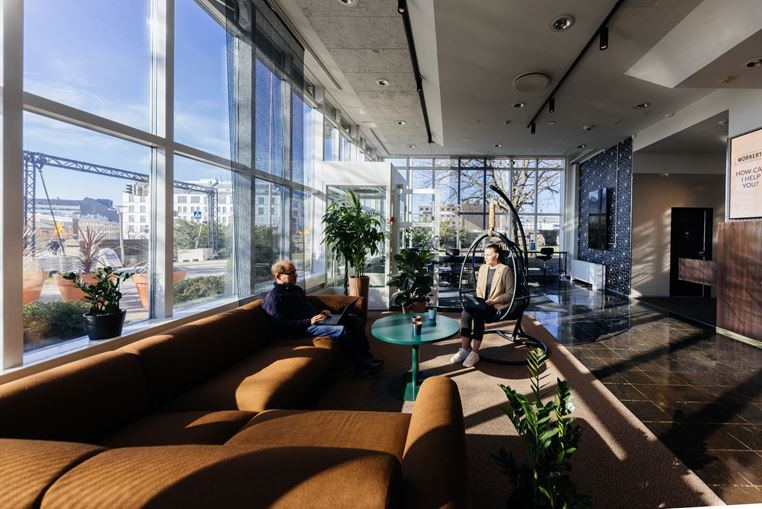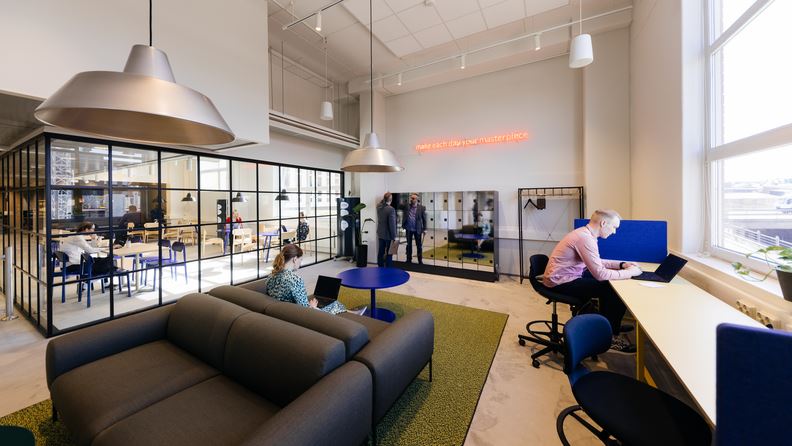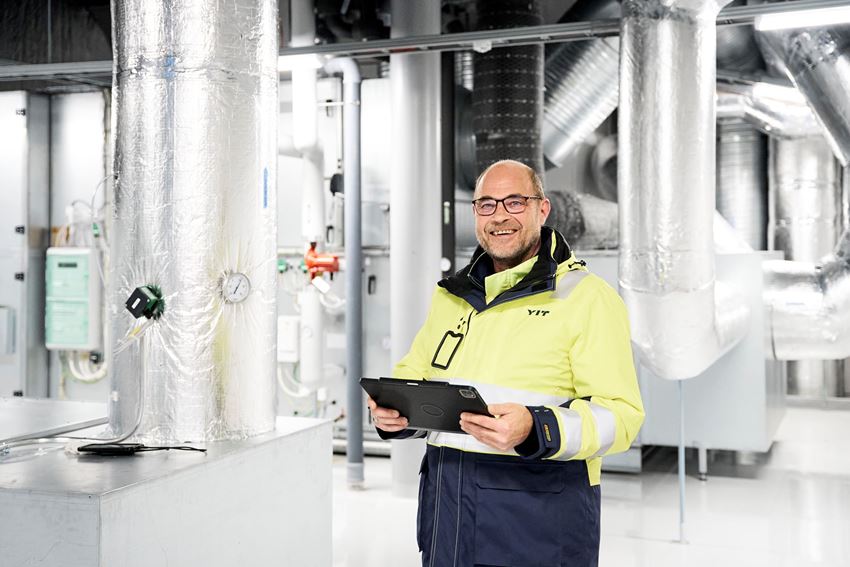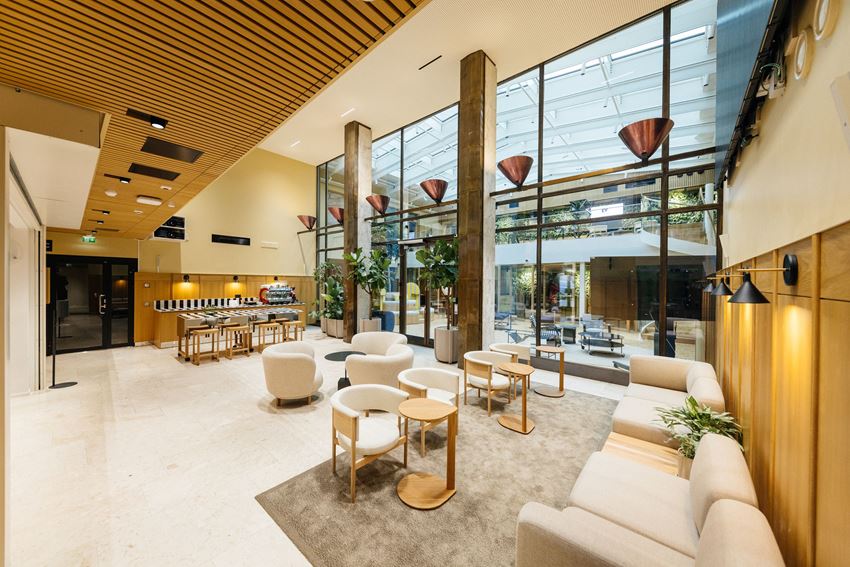Sustainable data centers as a service
- Work
- Renovation
- Offices
- Future of Work
- Sustainability
- 9/17/2021
Workery+ was created by repairing and recycling
In the heart of Vallila, an old property is pulsating with new life. We combined responsible and sustainable choices with modern technology that can affect energy consumption, among other things.
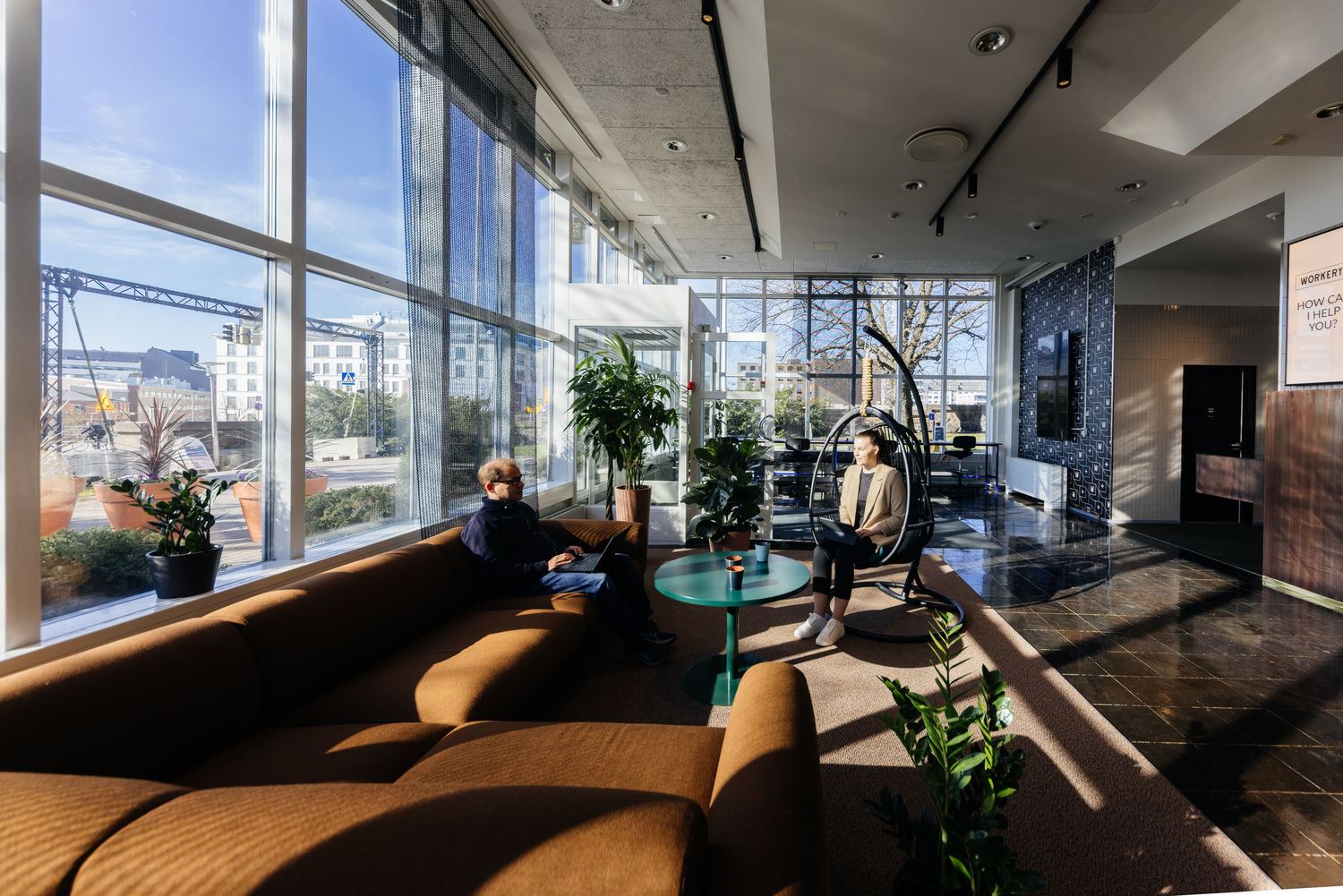
YIT’s Workery+ Vallila is located in a lively business district, next to the prestigious Konepaja residential area, at the corner of Teollisuuskatu, Sturenkatu and Elimäenkatu in Helsinki. The property has previously served as a production and office space, and in the spring of 2021, it was transformed into a new working space with a modern, rough, industrial finish. From the very beginning of the project, our aim was to reduce the amount of waste at the site, as the demolition of properties puts a strain on the ecosystem. The decision to not demolish a building can be an environmentally wise choice; for example, it means that the project does not generate concrete waste or produce new concrete.
The interior design agency Fyra acted as our partner and came up with ideas for sustainable and functional solutions, enabling future needs and saving the environment.
“The aim was to highlight the best features of the property. We peeled back some of the layers and ensured that the space stands the test of time and is flexible enough to enable changes, which allows for a wide range of uses in the future,” says Anu Latvala from the interior design agency Fyra. Latvala was responsible for designing the interior concept for Workery+ Vallila. The premises and concept will be further developed based on the needs of the users.
Reduced environmental load through choices of materials
In principle, the Workery+ Vallila project aimed to utilise and preserve as much of the existing fixed structures as possible. The amount of new acquisitions was minimised and the life cycle of materials and products was taken into account. There is no need to own everything; furniture and dishes can also be rented.
“The materials were acquired as locally as possible and we wanted to source our products from Finland. The furniture is rented,” says Latvala.
Some surplus office furniture from YIT's headquarters was put to use in Vallila.
The building's old concrete floors were polished and given a dust-binding treatment to make them easier to clean and help erase coffee stains, for example. The surface material solution entailed cost, schedule and environmental savings. Unused carpet material found in the property was used in the conference rooms. The solution saved waste and improved the acoustics of the conference rooms. The ceilings were preserved as they fit the industrial look and were in good condition. There would have been little benefit to replacing them.
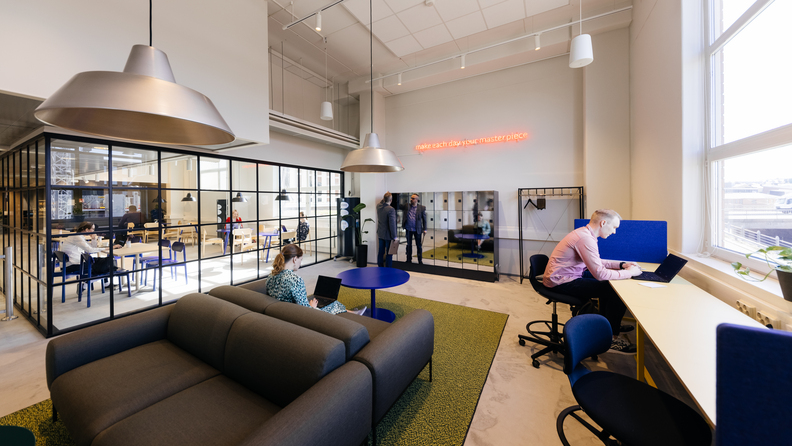
The fixtures for the kitchens were assembled from two existing kitchens. A needs assessment was carried out with the restaurant owner, after which some of the old furniture at the site was put to use and supplemented with used furniture sourced elsewhere. It was almost as if the kitchen was assembled from pieces of a puzzle after all the pieces had been tested. However, recycling old furniture and purchasing second-hand furniture requires planning, time and effort.
Plumbing fixtures could also be preserved as they were intact, functional and clean. However, some of the taps were replaced with sensor taps, taking into account the requirements during the COVID-19 pandemic and the safety of the users.
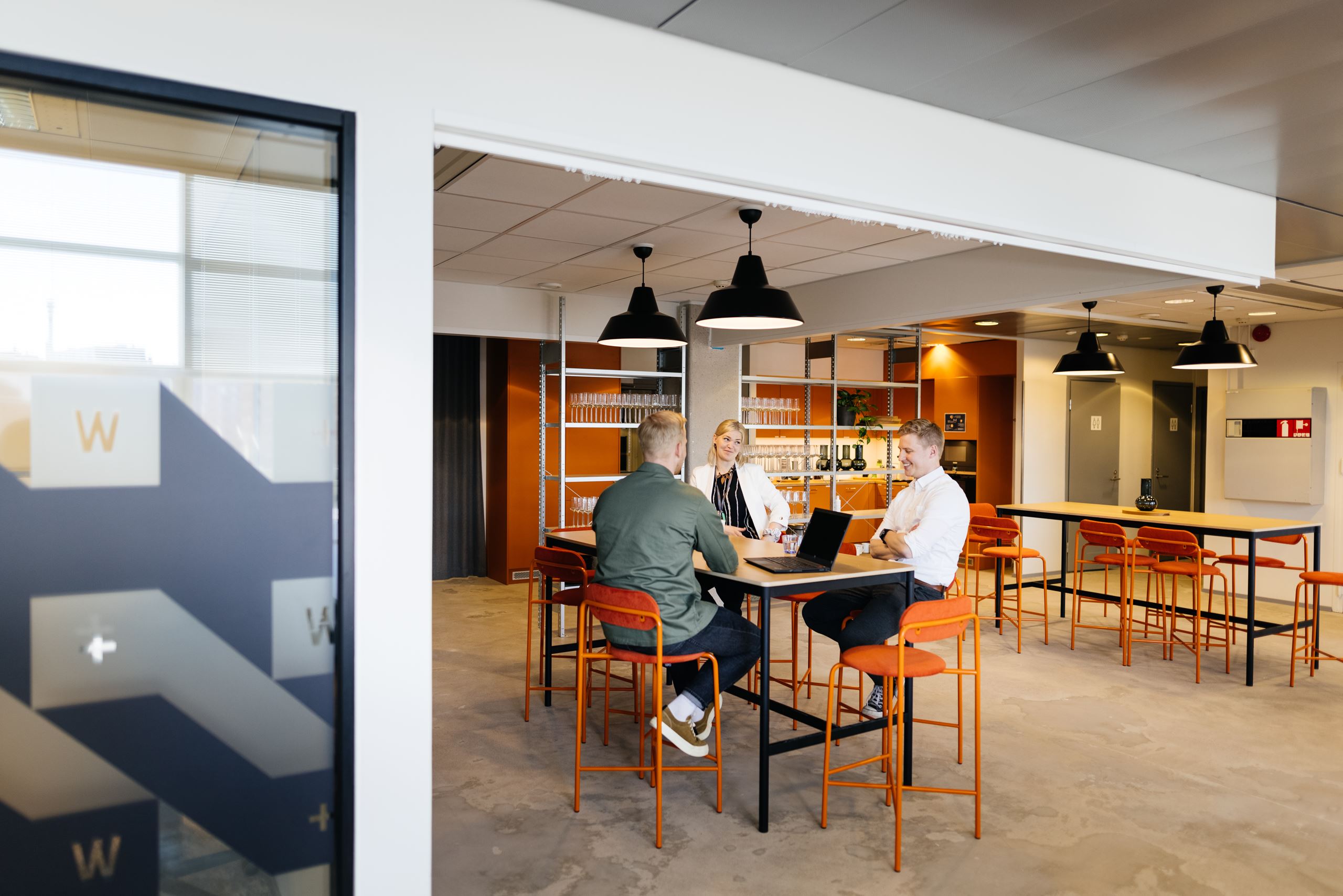
Catching the eye and creating an atmosphere
The old metal floor of the bakery that used to operate on the premises immediately catches the eye in the lobby. The conserved, unique floor was restored to its previous glory.
Latvala says that the lobby is her favourite space and acts as the building's business card.
“That’s where you have your first encounter with the building and the services. It's like arriving at a hotel, full of dreams and wishes for your holiday.”
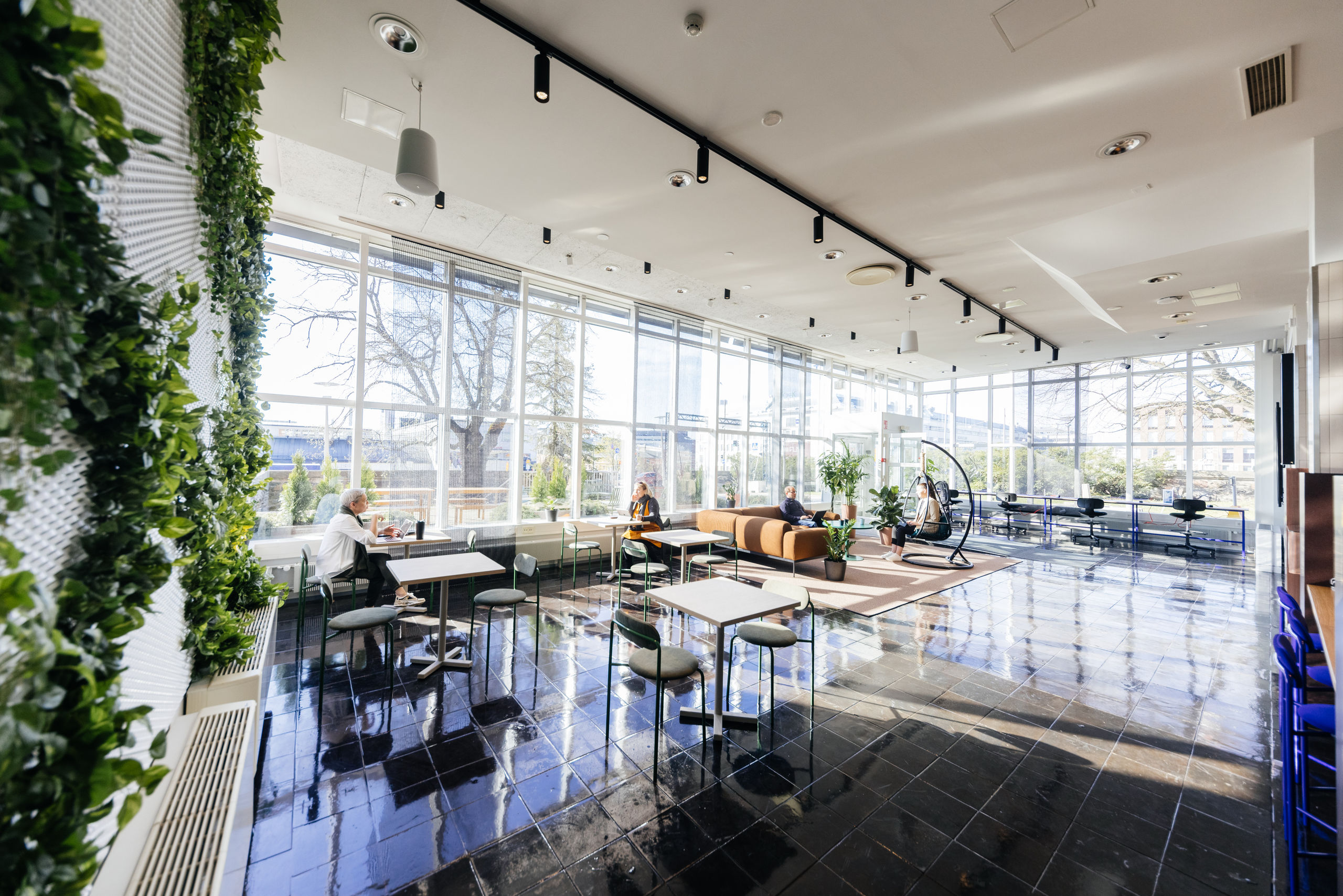
Although much of the old has been preserved, spatial planning solutions have created a modern and fresh look in the premises. Highlights and fading techniques can be used to guide the gaze of people using the space. There are many impressive and innovative elements, such as green walls that create a lush, jungle-like feel.
“A great overall appearance can be achieved by highlighting the best features of the space and adding something that fits the look and original atmosphere. It's about creating a good balance and atmosphere,” says Latvala.
The wall lamps in the corridors were moved above the doors as light signals. Other technology and many elements found in the premises were also used and moved from one place to another.
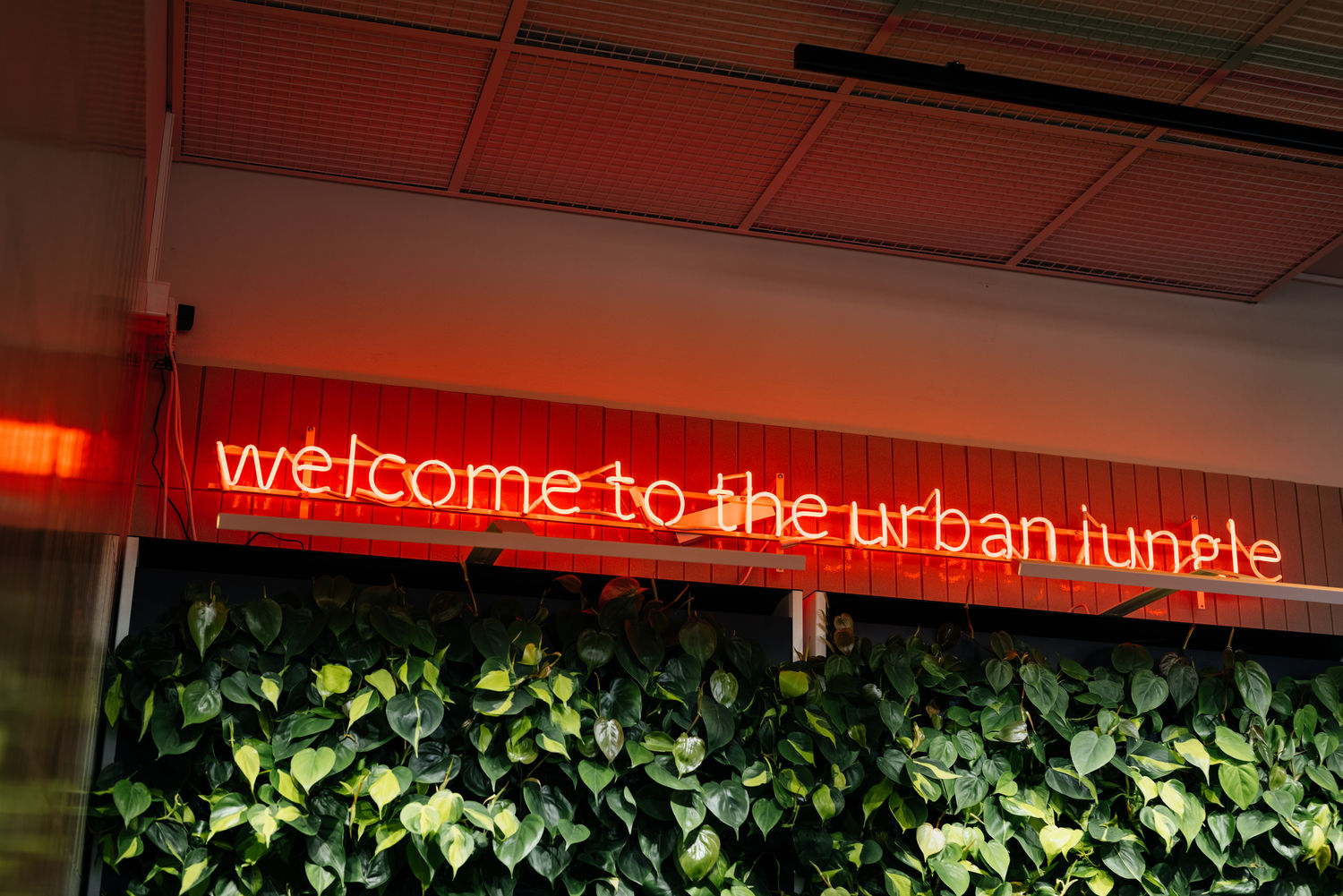
Is this a new trend in renovation projects?
Latvala sees a clear change in this respect.
“The common goal is to achieve high-quality results sustainably. Renovation projects will be developed and things will be done better. Renovation projects are also a trend in itself; when you want to make the most of the resources already in place, renovation must be seen as the preferred option instead of demolition and new construction. We want to lead the way and constantly learn to improve our operations. The Nordic countries have come a long way. Finnish clients are environmentally aware and interested in low-carbon materials. Clients are actively asking how to reuse old, existing solutions.”
Why should everything be new? Latvala hopes that “We will move away from a model that does not fix things, but needs to replace them. Whether it is a device or a structure, we should primarily choose repair or maintenance.”
“It's always great to see real estate pulsing with new life,” Latvala concludes.
Further reading:
